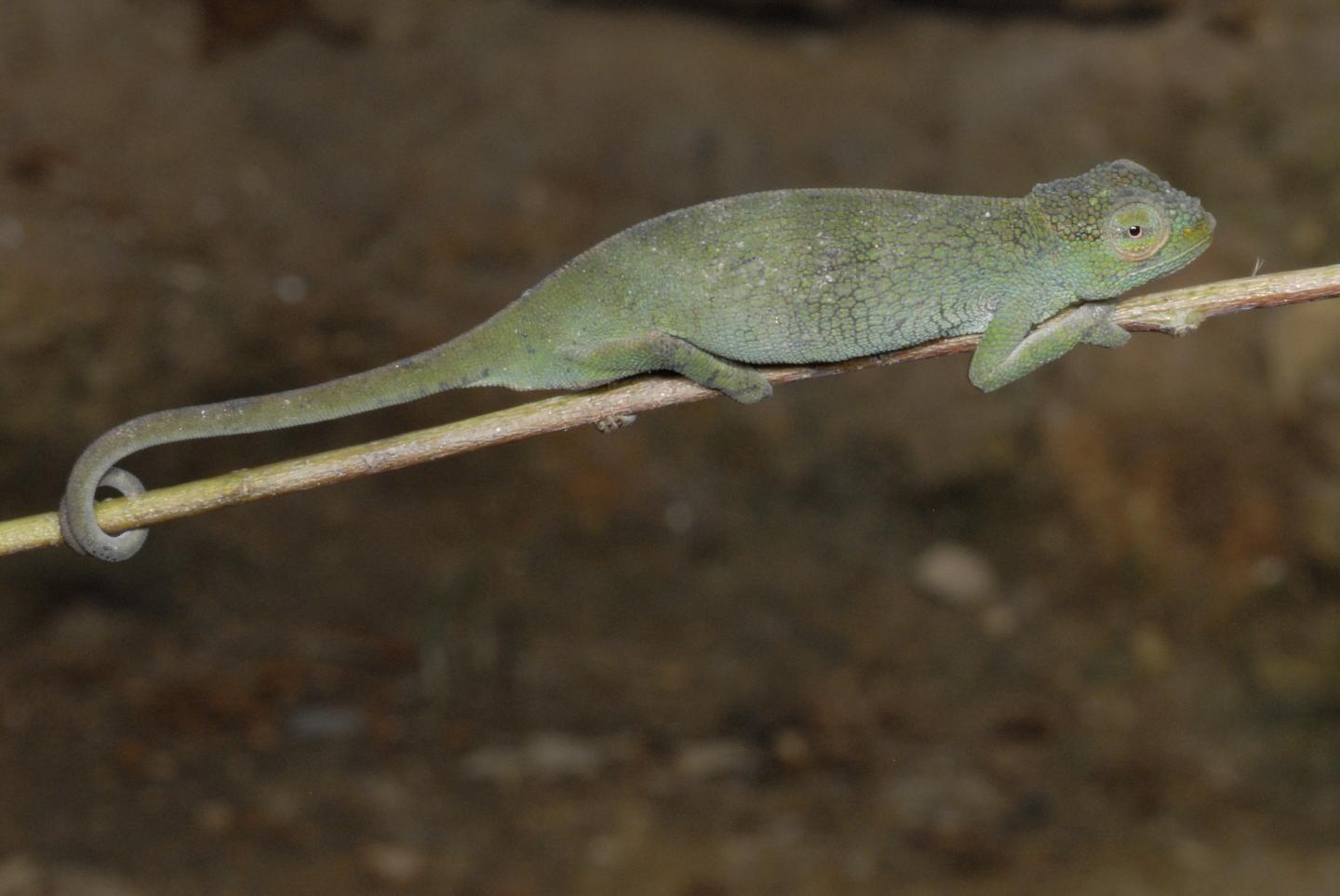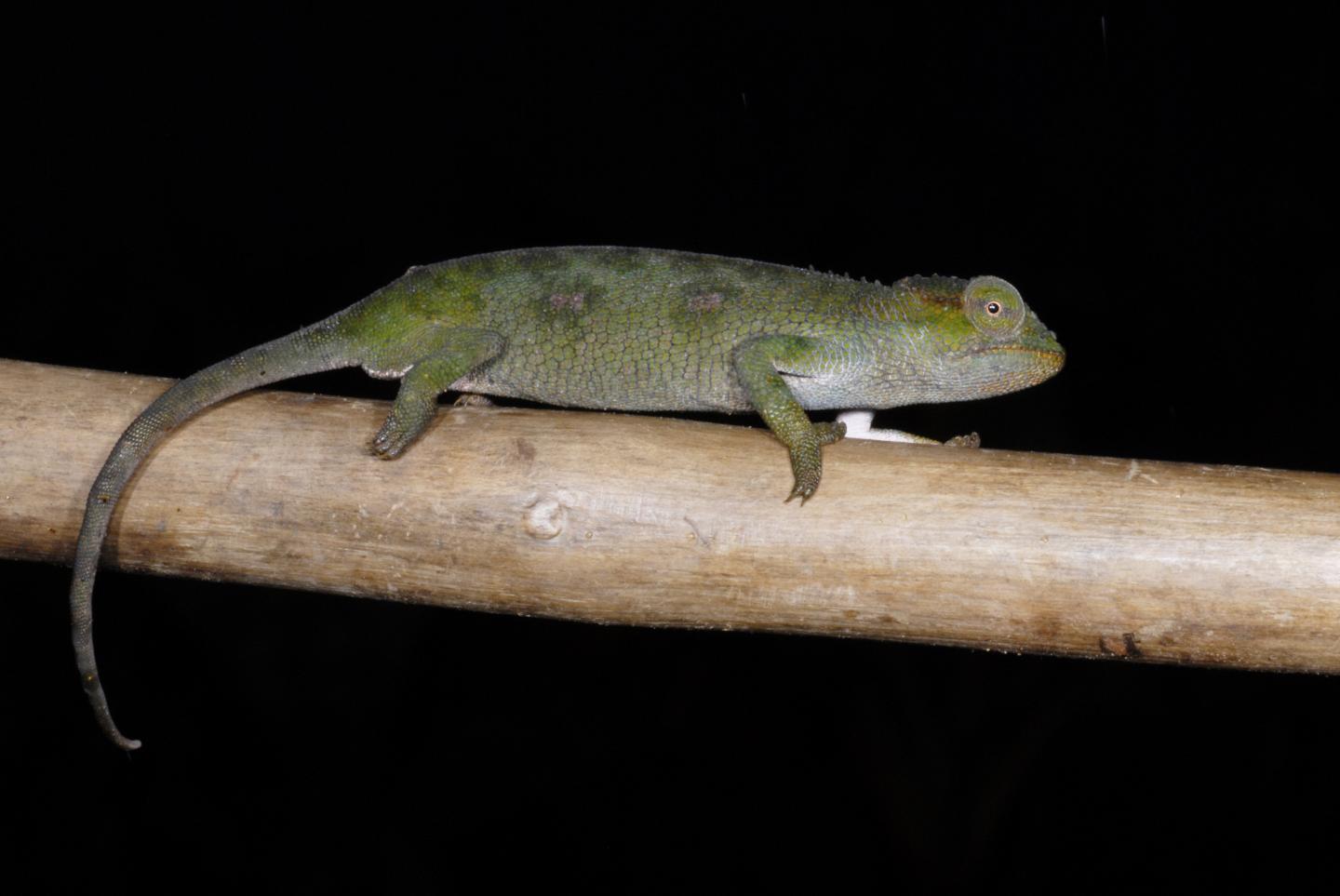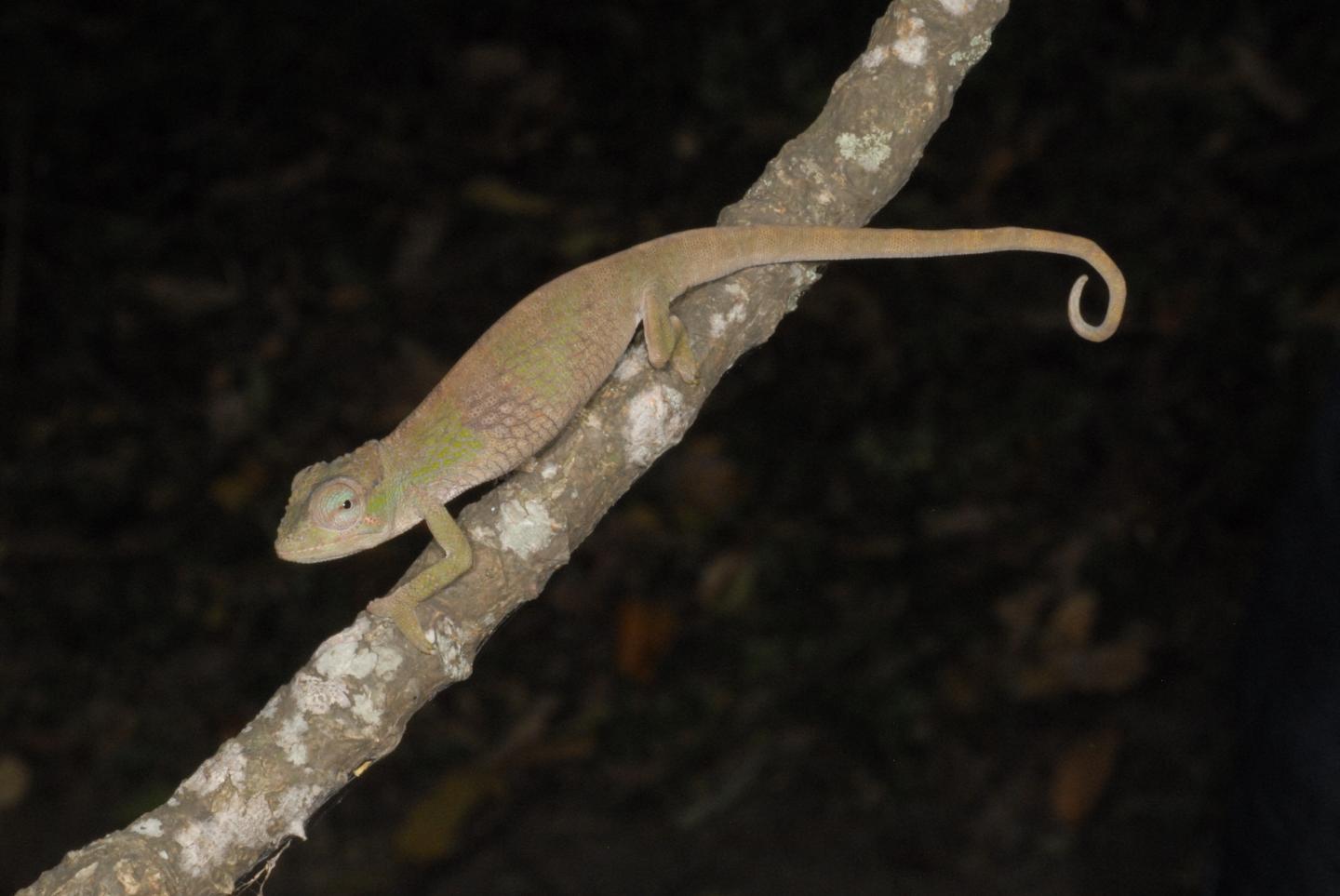Scientist discovers three new chameleon species but issues dire warning
A scientist discovered three new chameleon species in the Albertine Rift in Central Africa but he warned that the changing landscape puts the region’s biodiversity in danger.
University of Texas at El Paso doctoral candidate Daniel Hughes has discovered three new species of chameleons. Historically, the three species have been regarded as a single one but after analysing geographical, morphological, and DNA data, Hughes proved the species’ true diversity.
The three new chameleons come from Central Africa. The specimens were collected in the Democratic Republic of the Congo between 2009 and 2014, mainly by Hughes’ mentor Eli Greenbaum, Ph.D., associate professor of biological sciences. But scientists were reluctant to go on the site and study the biodiversity of the region due to the political unrest. But Greenbaum has been travelling and conducting research in the area for about 10 years.
Hughes joined the study and three years ago started his work in the field together with Greenbaum.
“We had this really nice dataset with samples collected all throughout the range of a particular species which meant we could really figure out its true diversity,” Hughes said. “We took to the next step and ultimately described three new species.”
The process of identifying the new species was by no means an easy or a fast one. After carefully looking over the data, the scientists still had to wait two years for external confirmation.
Two of the new chameleons, Rugege Highlands Forest Chameleon (Kinyongia rugegensis), and Itombwe Forest Chameleon (Kinyongia itombwensis), are named after the mountain ranges in which they’re found.

The third chameleon, Tolley’s Forest Chameleon (Kinyongia tolleyae), is named after herpetologist Krystal Tolley, the principal scientist at the South African National Biodiversity Institute in Cape Town.

“I think I went into shock when I found out, but also really happy,” Tolley said. “I have been working on chameleons for many years, and they really are my main topic of research. So to have a species named after me, for a group of animals where I’ve invested most of my research career is such a privilege. I’ve also been lucky enough to actually see this species in Uganda, together with both Danny and Eli. It’s a sassy little thing, which really makes it a good fit.”

The scientist published his study in the Zoological Journal of the Linnean Society and hopes that it will contribute to the preservation of the biodiversity in the region especially as the Albertine Rift is not only geologically unique but it also harbours more endemic vertebrate species than any other area of similar size on continental Africa.
“In these remote regions that are sometimes thousands of miles away from many people, it can be hard to relate,” Hughes said. “So, hopefully with our work, we can start to bridge that gap to broaden our awareness that everyone’s actions have implications for these species from threatened regions they may never see. If conservation efforts in the various countries of the Albertine Rift cannot rapidly improve, many rare and potentially other new species will be lost.”
Currently, there are 206 described species of chameleons on the planet and Hughes hopes to continue finding many more. But he also cautions that the coming years will probably be the last ones that offer the chance for discovery of the environment in Africa is changing so rapidly and the forests in Central Africa are shrinking.